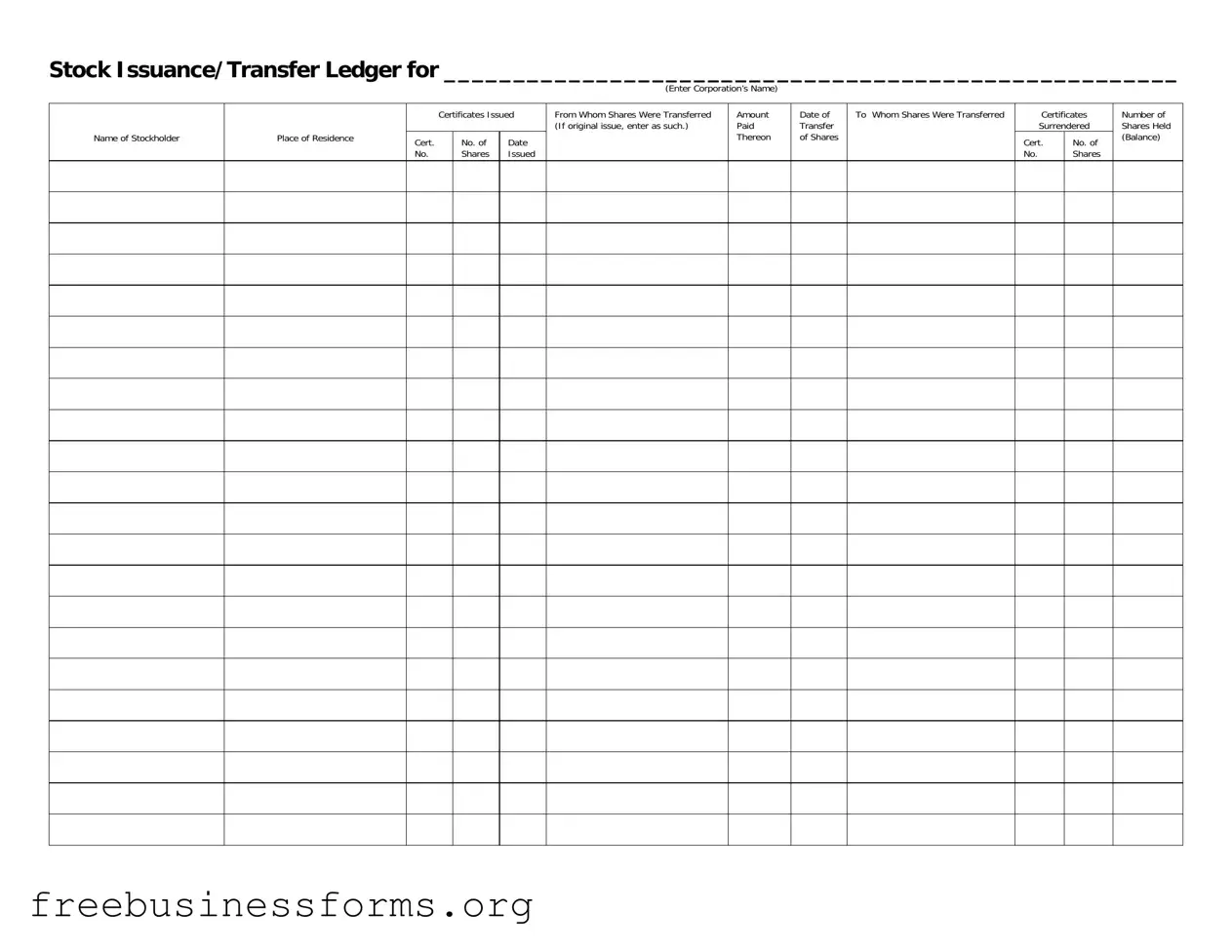The Stock Transfer Ledger form is an essential document for corporations managing their stock ownership records. It serves as a comprehensive record of stock issuance and transfers, ensuring that all transactions are accurately documented. Each entry on the form includes critical information such as the name of the stockholder and their place of residence, which helps in identifying the owners of the shares. Additionally, it tracks the certificates issued, including their numbers and the dates on which shares were issued. When shares are transferred, the form captures details about the transferor and transferee, including the amount paid for the shares and the date of the transfer. This ledger also accounts for any certificates surrendered during the process and maintains a balance of the number of shares held by each stockholder. By keeping all this information organized, the Stock Transfer Ledger form plays a vital role in maintaining transparency and compliance in corporate governance.

